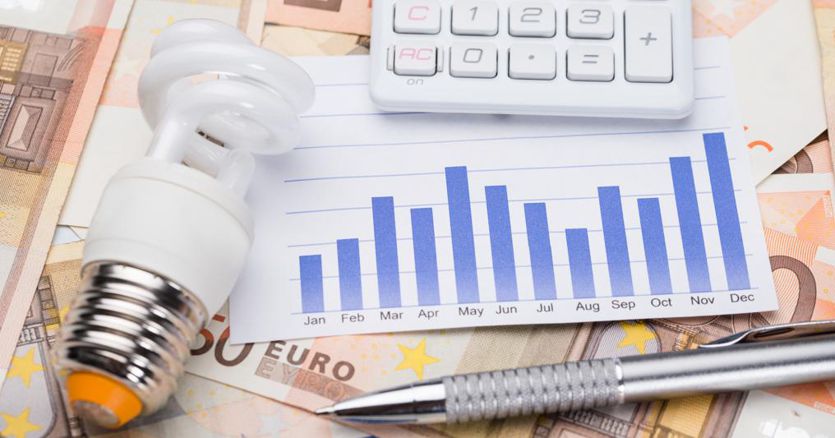The increase in energy bills in November must be sought, if we look at the data of the Regulatory Authority for Energy, Networks and the Environment (Arera), in the growth of wholesale gas prices in Europe and in part by the costs paid by companies for CO2 emissions produced. Let’s consider the consumption of electricity. For the authority, the consumption that is considered when referring to a family unit is 2700 kWh for energy. As Sos Tariffs writes, taking these models as a reference and with the expected increases, a family will spend around 145 euros more in a year for energy.
Wanting and having to save, a small gesture is to map electric appliances and household consumption. The advice is to go to the Consumer Portal – Spid credentials are required – active from 1 July 2019 and available at www.consumienergia.it, which allows users to monitor the consumption recorded by their electricity and gas bills. .
Having done this, it should be remembered that 70-80% of the household electricity bill derives largely from the operation of large household appliances and, albeit to a lesser extent, from audio-video and computer equipment. For a four-member family that uses two TVs, two computers, a fridge, a dishwasher, a washing machine, two air conditioners and an electric water heater, annual consumption is around 3,600 kWh. The electric water heater is at the top of the ranking of energy eaters, followed by lighting, refrigerator, washing machine and, almost on the same level, dishwasher.
Let’s start with the small things: light bulbs. The lighting sector in 2012 gradually banned the traditional incandescent bulb to switch to LED (Light Emitting Diod). They consume less, last longer and according to some studies it can be possible to save up to 90% of electricity. An 11 Watt bulb can generate the same light as a traditional 110-120 Watt bulb. Sensors, IOTs and voice assistants then covered the last mile, let’s say, allowing you to turn the lights on and off only when needed or without the “effort” of getting up and pressing the switch, but limiting themselves to the voice.
Light is a segment that in Italy in 2020 grew by 8% (50 million) against a market, that of the Smart Home, which the Politecnico di Milano quantified at 505 million euros, down compared to 2019 in the 5%. Signify, a spin off of Philips’ lighting division, is the best known and most innovative player in the industry. Let’s say it’s the Apple of lighting, and it stands out among other things by using the more secure ZiBbee standard than Wifi. The last two products launched in September are the new Filament White Ambiance bulbs, which allow you to switch from cool white to warmer shades of white. Classic smart bulbs have also been introduced, which instead see the arrival of brighter variants, at 1100 lumens (the equivalent of 75W) and 1600 lumens (100W). More interesting is the use of Gradient technology to blend and control colors, allowing designers to create new light sources.
